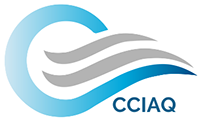Over more than a year into the global pandemic, understanding of Severe Acute Respiratory Syndrome Coronavirus-2 (SARS-CoV-2) transmission and Coronavirus Disease-2019 (COVID-19) infection prevention and control has advanced. Consensus that most transmission occurs via airborne particles has increased attention to inhalational exposures. New challenges are emerging, however, as SARS-CoV-2 evolves, and as preventive measures such as vaccination and prophylaxis are not uniformly available and accepted globally. Effective, safe measures to prevent disease transmission indoors remain a high priority.
This is the first update of Addressing COVID-19 in Buildings, building on the 2020 publication. It summarizes findings from over 250 carefully selected publications by scientists, medical experts, engineers and cognizant authorities; incorporates expertise of the Canadian Committee on Indoor Air Quality (CCIAQ); and benefited from review by external experts. The CCIAQ invites feedback and new information for future updates, or recommendations of topics for review (https://iaqresource.ca/en/contact-us/).
We spend as much as 90 percent of our time indoors, so it only makes sense that we want to make sure the air we are breathing is healthy. Yet many people, even those who may suffer from illness due to polluted indoor air, tend to think of outdoor air as being the major culprit.
There are many factors that can affect the quality of indoor air. These can range from chemicals in building materials, and consumer products like paint and cleaning products, mould, cooking fumes, as well as polluted air that may be entering from outside the building, or re-circulated from other parts of a building. Some of our more popular recent modules are about scent-free buildings (Module 6 – Scent-Free Buildings) and understanding chemical sensitivities (Module 13 – Addressing Chemical Sensitivities). Today more buildings are adopting scent-free policies, but, unfortunately, many people don’t take the issue seriously, nor understand what it means, or how it can cause serious health issues for occupants. These two documents should help you become more informed and discern the truth about these increasingly important issues.
All members of the CCIAQ, at IAQResource.ca, look forward to continuing to provide you with useful information on a wide variety of topics. We hope you will join us in learning and sharing this information so that we can all improve the IAQ in our homes and workplaces.

